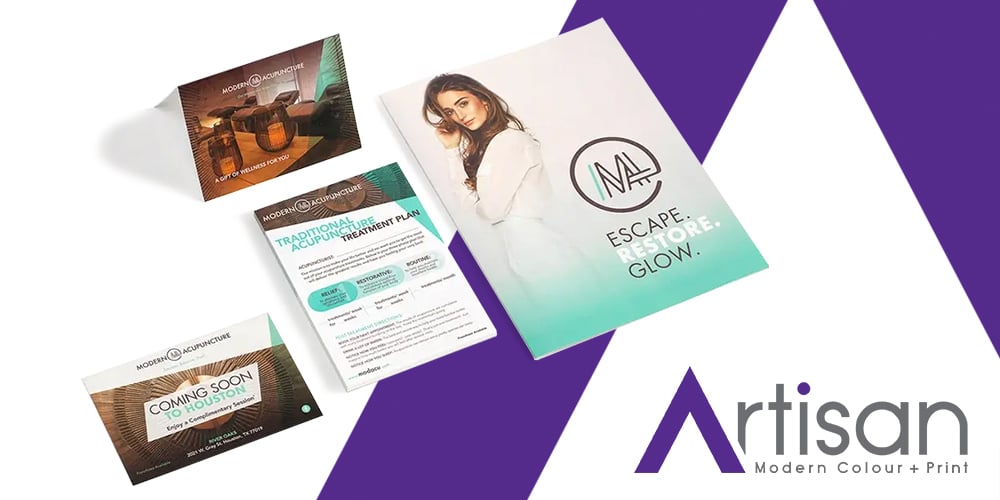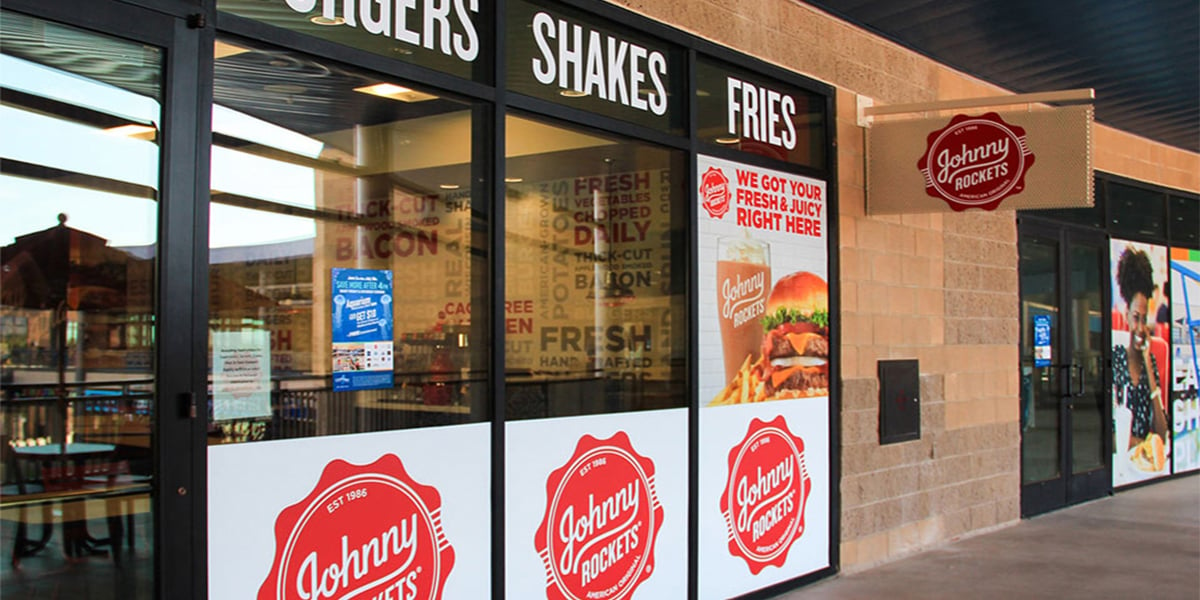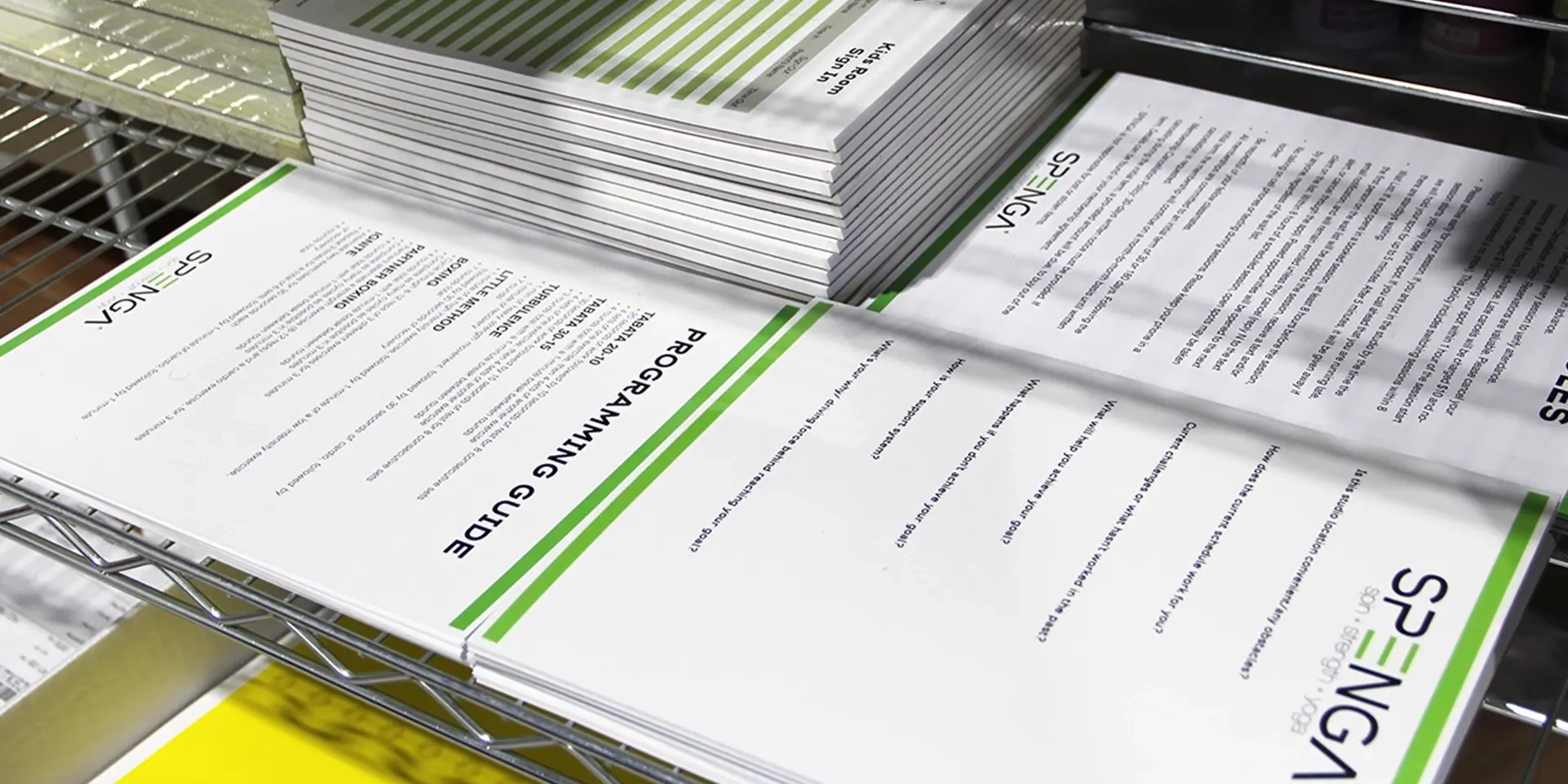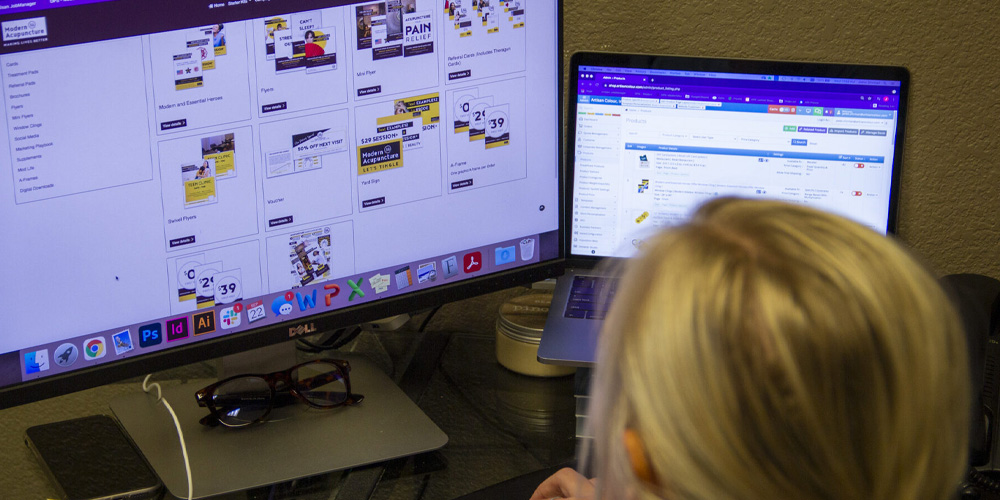Marketing Fulfillment 101: How to Manage Print Marketing Materials

What is marketing fulfillment? Think about when you place an order on Amazon. Once your order is received, the items are pulled from the warehouse, professionally packaged, and shipped.
Marketing fulfillment mirrors that process. It is the process of managing, storing, warehousing, assembling, packaging, and distributing marketing and promotional materials.
Most businesses already have a marketing fulfillment process in place for things like:
- Processing requests from sales reps for business cards, brochures, and other print marketing collateral.
- Fulfilling product sample requests from a building manufacturer's website.
- Shipping marketing collateral, promotional products, table skirts, and pull-ups to trade shows or events.
- Assembling, kitting, and shipping kits for product launches, seasonal campaigns, or new employees.
Now, think about your current marketing fulfillment process. Do you ever struggle with:
- Out-of-stock or overstocked marketing materials?
- Assembling, packaging, and the overall presentation of your marketing materials?
- Delays in processing requests for marketing materials?
If you can say yes to any of the above, it might be time to rethink your marketing fulfillment strategy.
Keep reading to learn how easy it is to turn your marketing fulfillment process into a fine-tuned marketing machine that enhances both operational efficiency and ROI.
- Strategies for managing marketing inventory.
- Best practices for kitting and assembling marketing materials.
- How to fulfill and ship marketing materials with ease.
Strategies for Managing Marketing Inventory
Precise inventory management is critical to successful marketing fulfillment.
When marketing inventory is out of stock, it can result in missed opportunities and create the perception that a business is disorganized or unreliable. Too much marketing inventory, however, ties up resources that could be used more efficiently elsewhere.
To prevent issues with inventory, consider implementing these three strategies:
1. Conduct regular marketing collateral audits to identify any discrepancies in stock levels and address them promptly. Don’t forget to regularly audit your marketing materials for accuracy and ensure all information is current, including:
- Logos and branding.
- Pricing.
- Addresses and locations.
- Images, URLs, and QR code links.
- Regulatory or legal statements.
2. Establish minimum inventory levels for all marketing materials. In doing so, you’ll know when it's time to reorder when the quantity reaches the minimum inventory level. Review historical data and identify patterns, such as seasonal fluctuations or events, that could affect inventory levels to determine the optimal minimum inventory level for each item.
3. Have an emergency stock for all your marketing materials to cushion against unexpected surges in demand or supply chain issues.
Best Practices for Kitting and Assembling Marketing Materials
Kitting and assembly is the process of arranging multiple marketing materials into a single box or folder.
Common types of kitting and assembly include:
- Sales enablement kits for prospects that contain branded folders, a letter from the sales rep, business card, product brochures, corporate overviews, branded folders, and case studies.
- B2B sales enablement kits with training materials, such as market research reports, sales playbooks, and comprehensive product information.
- Fulfillment of product sample orders and print collateral inserts, such as a business card of the recipient’s local sales rep, buying guides, and product literature.
- Trade show and event materials, such as pre-assembled tote bags that include brochures, pens, and notepads, or event kits that include everything for a 10 x 10 booth: pull-ups, table skirts, displays, brochure holders, and marketing materials.
- Promotional product fulfillment for company events, customer appreciation, loyalty programs, or corporate gifting.
The kitting and assembly process is time-consuming (especially when large quantities are involved). To streamline your kitting and assembly process, here are three best practices to implement.
- Choose the right packaging.
Custom packaging serves a dual role: it protects the product and projects your brand's quality. The packaging can be tailored to the contents inside the box, too. This provides superior damage prevention during transit and often reduces shipping costs through structural efficiency.
- Ensure that all marketing materials have a uniform appearance.
For example, use the same paper quality, fonts, and design elements across all items in the kit. Additionally, be sure that colors are consistent across print and digital media. - Organize marketing materials in a logical and easy-to-understand manner.
If print marketing materials are arranged without a logical flow and context, recipients can struggle to understand a business's offerings and value. For example, avoid leading with pricing as the psychology behind pricing may cause sticker shock without context. Instead, begin with a personalized introduction letter outlining the contents. Follow with benefit-focused collateral and testimonials to build value before presenting the pricing information.
Tips for Order Processing and Distribution
The speed at which orders for marketing materials are processed and distributed directly impacts customer satisfaction and business reputation. 90% of people expect deliveries within three business days, making speedy order processing and distribution paramount to marketing fulfillment.
The challenge with order processing and distribution is that speed and cost are interrelated, often forcing businesses to choose between fast delivery and cost-effectiveness.
Here are three tips to achieve the optimal balance between speed and cost:
- Optimize packaging to reduce shipping costs. Shipping costs are typically calculated based on the dimensional weight (length x width x height) or the actual weight of a package, and carriers will charge whichever is greater. For instance, if you send 20 lightweight brochures in a large box, the shipping cost will be based on the box's size, not its actual weight, to compensate for the potential revenue carriers would miss out on from a smaller, heavier package.
- Expedite order processing by establishing a dedicated area in your warehouse or office to fulfill frequently requested print marketing materials. Pre-assembling and storing ready-to-ship kits in this area can also help expedite order processing.
- Use an online ordering system, such as a web-to-print marketing portal, to process internal requests for marketing materials. A print marketing portal allows internal teams, sales reps, and other approved users to browse, customize, and order the exact materials they need, when they need them. More than an ordering tool, it functions as a logistics engine that brings structure, accuracy, and speed to every step of the print lifecycle.
Master Marketing Fulfillment with Artisan Colour
If managing print materials and physical assets is draining bandwidth or if fulfillment frustrations are hindering your marketing efforts, it might be time to partner with the marketing fulfillment experts at Artisan Colour.
Our extensive service offerings encompass everything you need to master marketing fulfillment, including inventory management, storage, kitting and assembly, order processing, print fulfillment, and shipping.
But our services don’t stop at marketing fulfillment; we are also a full-service commercial printer with a comprehensive menu of highly customizable services, including:
- Print Services: Marketing collateral, catalogs, branded packaging, vehicle wraps, personalized printing, and specialty printing.
- Signage and Branding: Business signage, wall and window graphics, indoor and outdoor banners, trade shows and events, retail displays, and wall wraps.
- Color Management: Prepress, premedia, online image libraries, photography, graphic design, image retouching, and color management.
- OrderJet Print Marketing Portal: Custom-built for your business, OrderJet is a user-friendly online portal that provides approved users with self-service access to browse, order, and distribute print materials they need. Once an order is placed through OrderJet, our team manages the entire fulfillment process: order processing, pulling the items from inventory, updating inventory, kitting, packaging, and shipping.
Contact our team today to learn how Artisan Colour can help your business master marketing fulfillment.






